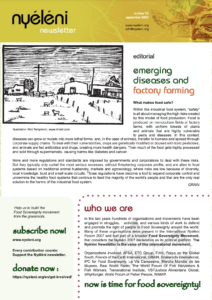20/09/2023
Under: Asia/World, Food Sovereignty and Agroecology, Publications
What makes food safe?
Within the industrial food system, “safety” is all about managing the high risks created by this model of food production. Food is produced on monoculture fields or factory farms, with uniform breeds of plants and animals that are highly vulnerable to pests and diseases. In this context, diseases can grow or mutate into more lethal forms, and, in the case of animals, transfer to humans and spread through corporate supply chains. To deal with their vulnerabilities, crops are genetically modified or doused with toxic pesticides, and animals are fed antibiotics and drugs, creating more health dangers. Then much of the food gets highly processed and sold through supermarkets, causing harms like diabetes and cancer.
More and more regulations and standards are imposed by governments and corporations to deal with these risks. But they typically only curtail the most serious excesses, without threatening corporate profits, and are alien to food systems based on traditional animal husbandry, markets and agroecology, where risks are low because of diversity, local knowledge, trust and small scale circuits. Those regulations have become a tool to expand corporate control and undermine the healthy food systems that continue to feed the majority of the world’s people and that are the only real solution to the harms of the industrial food system.
GRAIN
Click here to download the English edition (pdf)






